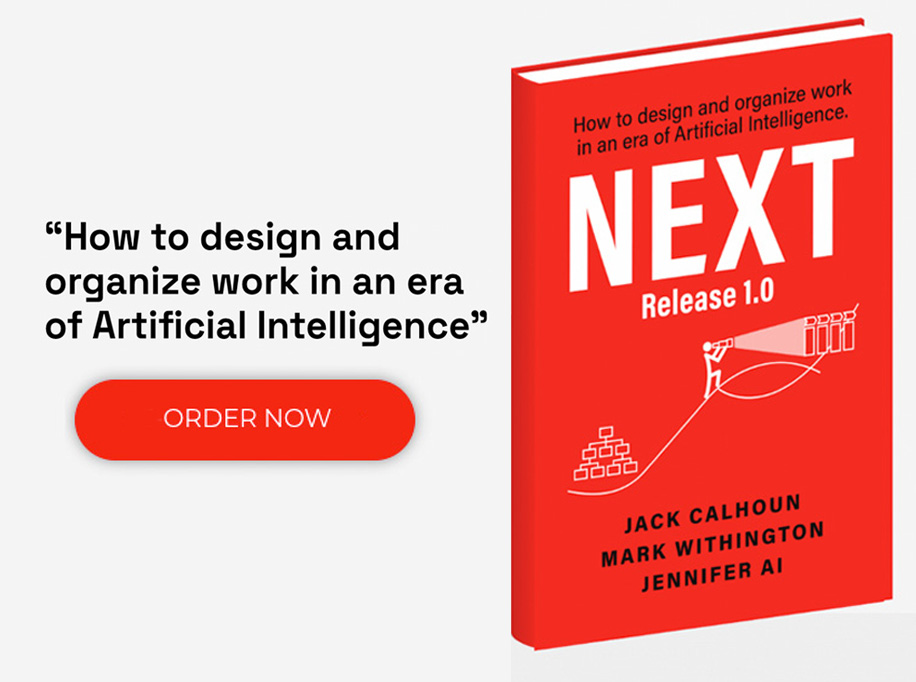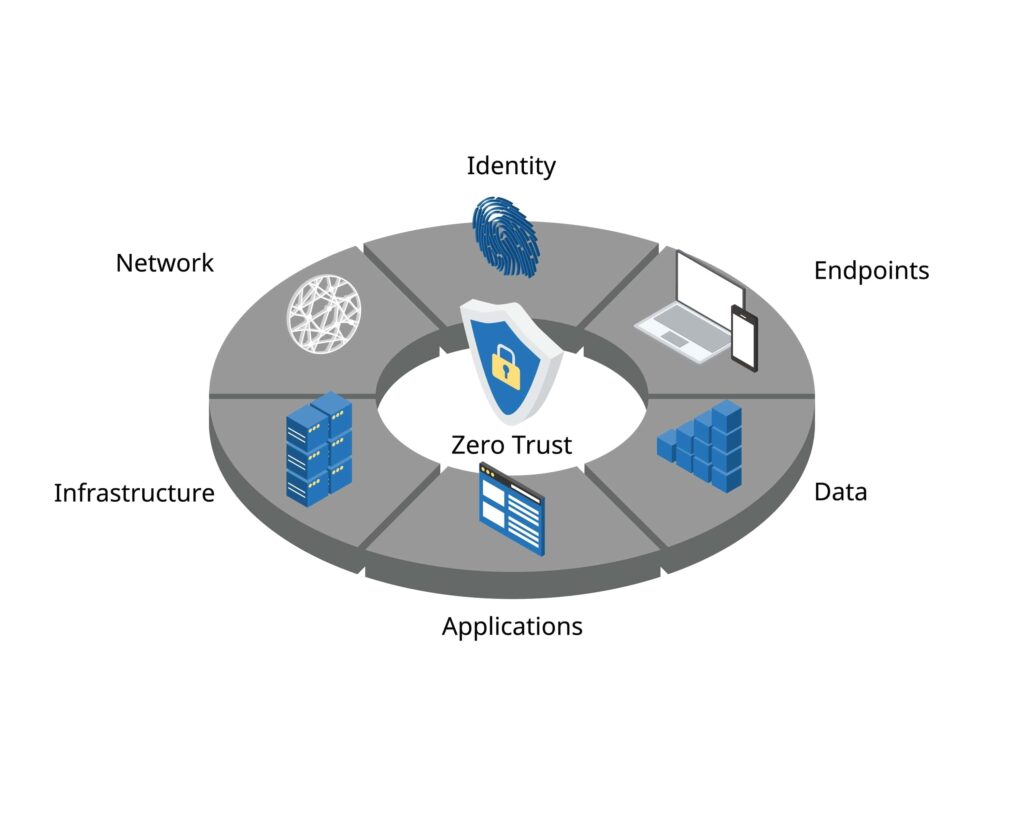Consider two divergent paths: The first organization diligently automates existing processes, celebrates modest efficiency gains, and gradually loses market relevance. The second maintains daily business operations, refuses to get caught up in the technological flurry, fundamentally reimagines their operating model with customer experience at its core, and emerges as an industry pacesetter, creating entirely new value propositions competitors struggle to replicate. It is possible to keep the wheels spinning, keep passing trends from getting caught in the gears, and still end up in the first place. We know because we have helped many businesses and organizations do precisely this. In our guide, we explain how to master digital transformation with our contrarian, run-and-improve approach.
Digital Transformation, Explained
Digital transformation is the strategic reinvention of an organization through the deliberate integration of digital technologies and capabilities across every aspect of the business. Unlike simple digitization or automation projects, true digital transformation involves rethinking business models, redesigning processes, and reshaping customer experiences to create new sources of value.
Instead of doing the same things more efficiently, digital transformation involves doing fundamentally different things than previously possible. Making this shift requires organizations to bravely move beyond archaic functional hierarchies that have dominated business thinking and embrace more dynamic, customer-centric operating models.
Why Digital Transformation is Important
Organizations that fail to transform face existential threats from both established competitors and digital-native disruptors.
Responding to Market Disruption
Consider traditional retailers facing competition from Amazon, taxi companies disrupted by Uber, or hotels confronting Airbnb. In each case, digital technologies led to entirely new business models that fundamentally altered customer expectations and industry economics. Transformation is not built from gradual improvements. If your business model is obsolete, the only way forward is the unchartered path.
Evolving Customer Expectations
With an abundance of information continually at our disposal, customers value organizations that can provide context, clarity, and conciseness. They want to conduct business on their terms – anywhere, anytime, on any device. Meeting these expectations requires organizations to reimagine their entire approach to value delivery.
Maintaining Competitive Relevance
Your company should be your fiercest competition. What does that mean? Well, the next wave of innovation and ideas that will most threaten your business model should come from your own business. If you aren’t thinking this way, irrelevance is the only thing on your company’s horizon. John F. Kennedy was on point when he said, “The time to repair the roof is when the sun is shining.”
Key Components of Digital Transformation
Successful digital transformation strategies include several of our signature approaches:
- Strategy-to-Execution Process Reengineering
Traditional strategy processes, often disconnected from execution realities, fail to deliver their promised outcomes a majority of the time. Digital transformation requires a fundamental redesign of how organizations develop and implement strategy.
This involves creating a dynamic, iterative process that links strategic vision directly to execution, leveraging AI and data analytics to identify opportunities, test hypotheses, and continuously refine approaches based on real-world feedback.
- Hi-Definition Operating Model Development
The conventional organizational chart provides an inadequate foundation for digital transformation. Instead, organizations need a “Hi-Definition Operating Model” – a comprehensive framework encompassing:
- Governance Model: A matrixed structure aligning capabilities and processes to functional structures
- Enterprise Process Model: A clear mapping of end-to-end processes that define, build capacity for, and deliver customer value
- Customer Experience Model: A detailed catalog of customer journeys and experiences
- Technology Model: A roadmap showing how technology powers new digital capabilities
A multidimensional model provides the visibility and alignment necessary to successfully transform your organization.
- Customer-Obsessed Culture Building
Digital transformation must be driven by a relentless focus on customer needs and experiences. Even though every business will say they are customer-focused, is this really true? Or does this marketing slogan only go skin deep?
True customer obsession means designing from the outside in, placing customer experience at the center of all decisions, and leveraging data and AI to understand and anticipate customer needs before they’re expressed.
- Prescriptive Design Adoption
Traditional development approaches assume business leaders understand how digital technologies can be applied. The reality is that most executives don’t fully grasp the transformative potential of emerging technologies.
Prescriptive design involves using AI and other advanced technologies to lead the conversation about how new workflows and processes should be designed, showing possibilities that business leaders might never have imagined on their own.
Common Digital Transformation Technologies
While digital transformation is fundamentally about business strategy rather than technology implementation, several key technologies currently drive unprecedented transformation opportunities:
Artificial Intelligence and Machine Learning
AI represents perhaps the most transformative technology driving digital reinvention, and new opportunities emerge almost every day. Unlike previous technologies focused on automation, AI can generate new insights, content, and approaches. AI applications range from customer experience personalization to entirely new product development approaches, predictive analytics, and decision support systems that augment human abilities.
Platform-as-a-Service (PaaS)
Digital platforms provide the foundation for rapid innovation and scalability. PaaS allows organizations to build, test, and deploy new applications and services without managing the underlying infrastructure, accelerating digital transformation initiatives. AI and PaaS are fundamentally new technologies. Together, they can actively drive the design and development of new workflows and processes.
Cloud Computing
Cloud infrastructure provides the flexibility, scalability, and accessibility needed to support digital transformation initiatives. By moving from capital-intensive on-premises infrastructure to more agile cloud environments, organizations can experiment more readily, scale more efficiently, and adapt more quickly to changing conditions.
Internet of Things (IoT)
IoT technologies connect physical assets to digital networks, enabling new levels of monitoring, analysis, and control. From manufacturing equipment to consumer products, IoT creates new data streams that can drive insights and enable new business models.
Blockchain
Distributed ledger technologies enable new approaches to trust, verification, and value exchange. In supply chains, financial services, and other domains, blockchain can increase transparency, reduce friction, and create new transaction models.
5 Benefits of Digital Transformation for Businesses
Organizations that embrace digital transformation strategies unlock a cascade of benefits, including:
- Enhanced Customer Experiences
Digital transformation helps organizations create personalized and frictionless customer experiences. By deeply and accurately understanding customer journeys and leveraging data-driven insights, organizations can anticipate needs, resolve issues proactively, and create immersive experiences.
- Increased Operational Agility
Digitally transformed organizations can respond more quickly to market changes, customer needs, and competitive threats. By breaking down silos, streamlining processes, and creating more flexible operating models, continual adaptation is continuous and fluid rather than clunky and periodical.
- New Revenue Streams and Business Models
Digital technologies activate entirely new ways of creating and capturing value. Organizations can (and must!) develop new products, services, and business models that wouldn’t have been possible with traditional approaches.
- Data-Driven Decision Making
Digital transformation replaces intuition and historical precedent with fresh and timely data-driven insights. By collecting, analyzing, and acting on data created in the now, organizations can make more informed decisions, identify emerging opportunities, and lessen potential risks.
- Empowered Workforce Innovation
Successful transformation initiatives empower employees with new tools, capabilities, and decision-making authority. Employees can be more productive and feel more creative and innovative – a win for everyone involved.
Real-World Examples of Successful Digital Transformation Strategies
While Netflix, Uber, and other digital natives often dominate transformation discussions, many established organizations have successfully reinvented themselves through digital transformation. Here are two examples of transformations we supported:
Massachusetts Registry of Motor Vehicles (RMV)
The RMV faced chronic challenges with long wait times and poor customer experiences. Through a strategic transformation initiative guided by Accelare, they implemented innovative approaches including:
- Dual-line queuing systems that separated prepared from unprepared customers
- AI-powered queue management algorithms that balanced throughput optimization with service-level targets
- Digital service catalogs that improved transparency and accessibility
These changes dramatically reduced wait times, improved customer satisfaction, and enhanced employee morale – demonstrating how even government agencies can achieve transformative results through strategic digital initiatives.
Behringer/Music Tribe
Once focused on producing analog audio equipment through traditional channels, Behringer recognized the need for fundamental transformation as digital audio technology advanced and customer preferences shifted toward online shopping.
Their transformation journey included:
- Developing a range of digital audio products
- Revolutionizing internal operations by eliminating all paper and transitioning to fully digital workflows
- Creating a vertically integrated manufacturing capability
As Behringer’s leadership stated: “Music Tribe was the result of the total transformation of Behringer to become a customer and digital obsessed organization. This meant disrupting everything… to deliver life-changing experiences for our customers.”
By embracing digital disruption and transforming their business model, Behringer adapted to the changing landscape, and most importantly, thrived.
Build a Digital Transformation Strategy with Accelare
Navigating the immense (and often overwhelming) complexities of digital transformation requires a structured, strategic approach well beyond technology implementation. Accelare’s proven methodology provides a comprehensive framework for successful transformation:
- Pause and establish the right context – Rather than rushing into tactical AI projects, take time to understand your strategic objectives and develop a clear transformation vision.
- Redesign your strategy-to-execution process – Create a more dynamic, iterative approach to strategy that connects directly to implementation.
- Develop a Hi-Definition Operating Model – Build a multidimensional view of your organization that aligns processes, technology, and customer experience.
- Cultivate a customer-obsessed culture – Place customer needs and experiences at the center of your transformation efforts.
- Adopt prescriptive design approaches – Use AI and emerging technologies to identify new possibilities rather than simply automating existing processes.
The fact of the matter is that you can’t achieve a new level of productivity and performance by automating existing operating models. The future belongs to organizations that can harness the power of digital technologies to create new business models, deliver exceptional customer experiences, and continually reinvent themselves in response to changing conditions. The time to begin your transformation journey is now.
Ready to transform your organization for the digital age? Contact Accelare today to learn how our proven methodology can help you develop and implement a successful digital transformation strategy.











